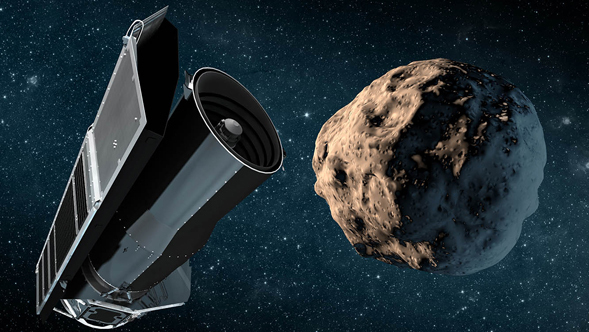
Credit: NASA/JPL-Caltech
Artwork • June 19th, 2014 • sig14-019
sig14-019
Observations of infrared light coming from asteroids provide a better estimate of their true sizes than visible-light measurements. This diagram illustrates why. At left, are three asteroids with different sizes and compositions. Even though they are different, they can appear to the same to a visible-light telescope because they reflect the same amount of sunlight. It's impossible to know their sizes.
For example, the small, white asteroid has a more reflective surface so it can appear to have the same brightness as a larger, dark asteroid. The same is true of a shiny penny and larger piece of dull copper -- they could, in some circumstances, reflect the same amount of total light.
The right side of the illustration shows what happens in the infrared. When an asteroid is hit with sunlight, it radiates some of that back as infrared light. The amount of infrared light that comes off an asteroid thus depends on the size of its exposed surface area.
When infrared and visible-light observations are combined, the reflectivity of a surface, or its albedo, can also be determined.
About the Object
- Name
- 2011 MD
- Type
- Interplanetary Body > Asteroid








